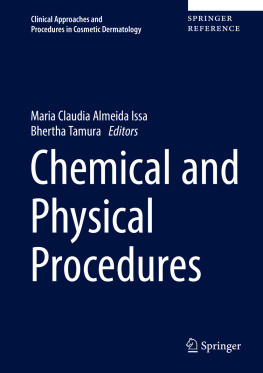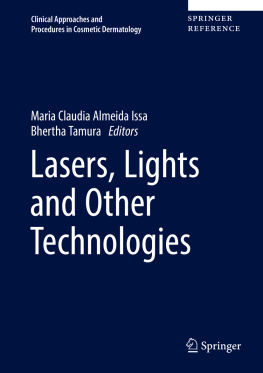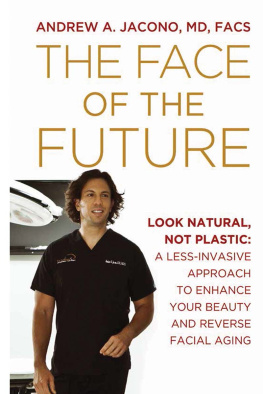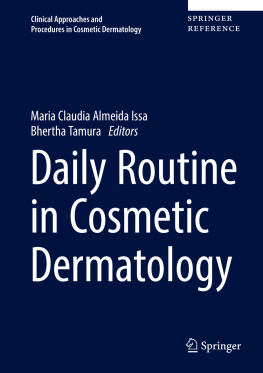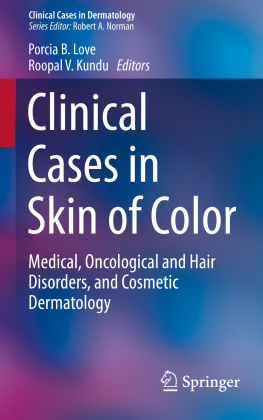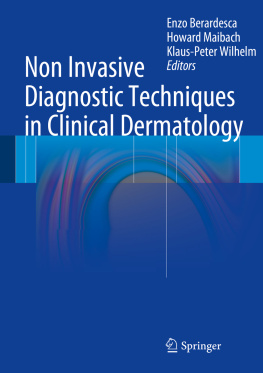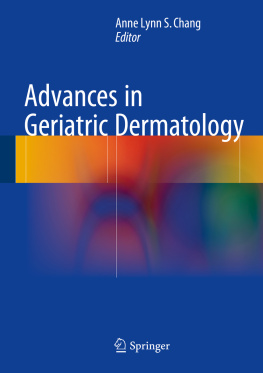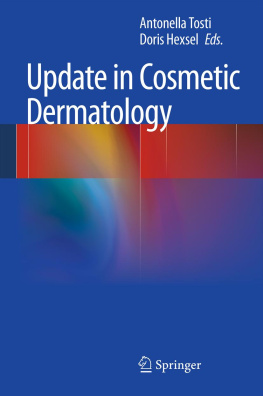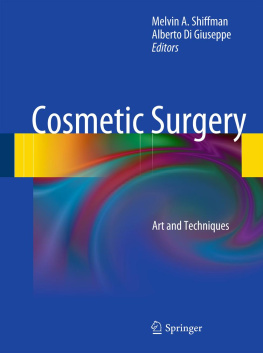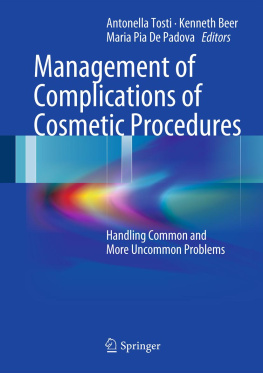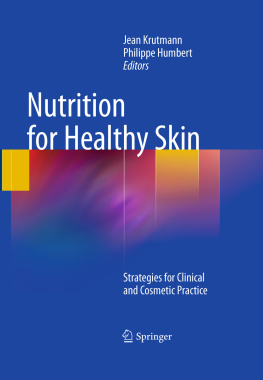Abstract
Chemical Peels may be defined as controlled wounds of the skin made by the dermatologist to multiple purposes. They are classified as superficial, medium, and deep according to the depth of penetration of the chemical solution. The deepest the peelings, the best results and the greatest range of complications. Superficial chemical peels are useful procedures to enhance the appearance of the skin with fast results and little or no downtime. They are appropriate to all skin phototypes. Retinoic acid is a well-established agent in the treatment of acne from the 1960s and photoaged skin, and it has been used for this purpose since the 1980s. Photoaged skin is characterized by wrinkles, hyperpigmentation, enlarged pores, laxity, and loss of brightness, among other alterations. For the last decades, retinoic acid has been used in higher concentrations for superficial peelings as an effective and safe tool for the dermatologist. This chapter will drive you through the stages and techniques of this peeling step by step based on my 30 years of personal experience and medical literature.
Introduction
The development for the treatment of photodamaged skin has been enormous in the last decades. New concepts and better understanding of the aging process caused huge changes in the way dermatologists can treat their patients. Better equipments of lasers and lights, radiofrequency, ultrasound, 3D rejuvenation and volumization, botulinum toxin and their new targets, lifting sutures, and collagen enhancers among others are new tools always being renewed and reinvented. But one procedure remains unchanged, always the same since ancient times. Peelings actually have been increasing in number as a procedure in the last years. According to the Plastic Surgery Statistic Report () of the American Society of Plastic Surgery, 1.2 million chemical peelings were performed in 2014 in the USA with an increase of 7% from 2013 to 2014. It is becoming more and more popular. It can renovate layers of cells and cause neocollagenesis. Superficial peels can bring back bright and clear skin in just few days. They are relatively simple procedures and inexpensive for dermatologists. Best results are achieved with a series of applications at short intervals.
History of Retinoic Acid Peels
Retinoic acid or tretinoin has been used for the treatment of acne for many years because of its comedolitic effect. It was been used for the treatment of actinic comedones (Kligman et al. ). At that time emerges the retinoic acid peels for various indications.
Mechanism of Action
The mechanical action of the peeling, even when limited to the epidermis, is able to stimulate regeneration via pathways in the dermis that are not totally understood (Fischer et al. )
We do know that the mechanism of action is characterized by thinning and compression of the stratum corneum, reversal of epidermal cells atypias, dispersion of melanin in the epidermis, stimulation of dermal deposition of collagen, increased deposition of glycosaminoglycans, and neovascularization (Yokomizo et al. ).
Retinoic acid has the property of making neocollagenesis and cellular renovation accelerating the cellular turnover of keratinocytes. It is comedolitic and a depigmenting agent, as it inhibits tyrosinosis and TIRP-1. There are also other mechanisms associated with the activation of nuclear retinoic acid receptors (RAR, RAR, and RAR) (Baldwin et al. ).
Indications
The retinoic peelings can improve photodamaged skin, skin texture, actinic keratosis, actinic melanosis , freckles, Civattes poikiloderma, striae, acne, follicularis keratosis, and melasma , among others.
Contra-Indications
Retinoic acid peelings should be avoided at pregnancy, lactancy, if the patient does have previous hypersensitivity episodes, telangiectasia, and rosacea .
Classification of the Superficial Peels
Superficial peels will exfoliate epidermal layers without going beyond the basal layer (Fischer et al. ).
They can be classified as very superficial, removing the stratum corneum (depth=0.06 mm), and superficial, causing epidermal exfoliation of the granular layer until the basal layer (depth=0.45 mm) (Yokomizo et al. ). The depth of the superficial peel, as of any peelings, will depend on the type of skin, pretreatment preparation of the skin, concentration of the retinoic acid, vehicle, and the technique of the application of the retinoic acid on the skin. The depth of the peeling will determine the post-peel healing with no downtime, little erythema, and mild desquamation, or, if exfoliating until the basal layer, a little downtime with darkening of the treated area and more desquamation. The post-peel reaction and recovery time must be discussed previously with the patient and an informed consent must be signed.
Preparation of the Patient, Use, and Dose
The ideal patient has had a previous home routine treatment given by the dermatologist. The purpose of the pretreatment phase is to prepare the skin for the peeling process and for the following regeneration phase. To achieve this, tretinoin is usually applied for 1 month before hand because its action on the skin facilitates a more homogeneous penetration of the peel, leading to a more consistent result. Moreover, preparation with tretinoin also facilitates to accelerate the post-procedure healing process. To prevent postinflammatory hyperpigmentation , the epidermal melanogenesis needs to be inhibited by the daily use of sunscreens (Fischer et al. ).
Darker skin individuals, Fitzpatricks phototype 3 to more, are prone to develop a post-peeling hyperpigmentation. They must be treated with hydroquinone or other approved substance at least for 3 weeks before the procedure. It may be used at daylight, even at the beach or at the pool with proper skin sun protection. It rarely causes contact allergy, but it will frequently cause primary irritant dermatitis if the patient uses it in a thick layer. So, it must be used in a minimal amount, almost nothing as I tell my patients. In melasma, it may be used as much as three times a day. The results are outstanding, and we think it is a golden standard for melasma! The treatment with hydroquinone prepares the skin to the peeling, making it safer. However, be sure you trust the pharmacist who will manipulate your formula. A wrong manipulated hydroquinone formula as monobenzylether may cause disasters such as permanent hypopigmentation, even far from the treated area. Be sure to refer your patient to the pharmacist you trust!
The patient must understand what is going to happen during and after the procedure and the importance of daily sun protection.
Even in superficial peels, herpes infection must be prevented. Perform a careful anamnesis and, if the patient has a herpes history, the prophylactic antiviral therapy with valacyclovir 500 mg 12/12 h for 5 days is given right before the peeling.
By the time of the procedure, the room must be silent and calm, relaxing music is welcome and the environment must be friendly. The room temperature should be as nice as possible. The patient must use a disposable cap and gown and must be wearing comfortable clothes. The dermatologist must wear gloves. It should be a pleasant time for the patient.

